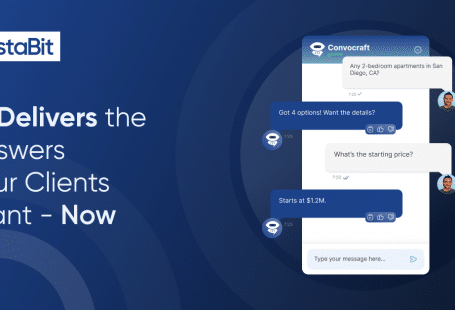Can anyone pitch their idea to investors without breaking a sweat? Probably not.
There are butterflies in the stomach. There is anticipation, apprehension, hope, and excitement in the air. You may wonder whether your idea will be bought or not, or whether it will be perceived rightly or not. And most importantly, whether it will be funded or not.
Having funds make you and not having funds break you. Even the most promising startups have failed because investors didn’t show enough gumption in their idea.
What you need is an Elevator Pitch along with a perfectly designed pitch deck. If you can succinctly describe your idea in the first 30 seconds, in a way that even a five-year-old can understand and invite follow-up questions, then half of your job is done.
It’s not just about your idea. How you present it matters too. You need to create a presentation that arranges different aspects of your product like an engaging story.
You won’t be short on tools while creating your pitch deck. You can go for Apple’s keynote or good old Powerpoint.
If you want to create a pitch deck online, then there is no need to look beyond Canva. You can avail a plethora of pre-designed and customizable templates. You can save the changes made and can access your deck from anywhere in the world.
Let’s break down the formula for creating a perfect pitch deck. We will discuss the kind of slides you can use in your pitch deck.
Giving the Overview
As the name suggests, you can use this slide to give an overview of your product. This is the slide where you don’t need to put too much text. Instead, speak more to the investors, and mention a few pointers in the slide.
See this slide as a backdrop. If you are a team, then use your best storyteller to give the overview.
The length of this slide is important. Try to keep it under one minute. It’s more like giving an elevator pitch. You need to master the use of one-liners. Those impactful statements that can sum up your product.
Avoid being boring and orthodox in your approach and take some creative liberty during this segment of your pitch deck.
What your product is?
Once you have given a teaser and built the much-needed hype, it’s time to reveal your product in its entirety.
Your product can be a heatmapping tool for analyzing the behavior of people who land up on a website. Now you can summarize your product by using a boring sentence, or you can use a 2 min long video. The choice is yours. Although to show “How stuff works”, a demo video is a potent way.
Also putting a video in between your slides is a good way to mix things up, as far as your content goes. However, if you are using Canva, you won’t be able to embed a video. In that case, you can use the screenshots of your video and use annotations so that investors can understand them better.
You can always add the link of your video. Once you are done showing the screenshots, you can click the link and play the video.
If you are using PowerPoint, then you can put a video directly into your slide.
What is that one big problem your product solves?
This is the slide in which you have to answer the Whys, Whats, and Whos. Why this product? Why does it exist? Who does it help? What problem does it cater to?
Let’s assume that your product is a heatmapping tool. It can help businesses analyze a visitor’s behavior on their website. They can know to what extent a visitor is engaging with a particular section of their website.
Sections of the website that attract more number of clicks are highlighted using shades of red, and the ones that attract the least number of clicks are highlighted using shades of blue.
This is how you need to explain your product too.
Introducing your team
This is where you try to establish trust between investors and your team. When there is capital involved, people want to know about people. It is as simple as that.
Mention about each and every person on your team. Talk about their educational background, and skills, their motivation behind working on this product, and their specific roles.
You can share pictures of your brainstorming sessions. Your storytelling skills will come into play here as well. This slide is more about your experiences than your product. It is these human experiences that will help you connect with investors better.
Everyone wants to see a team that has gone through ups and downs, and are well in touch with ground realities.
Market opportunity
This is when you tell investors that your product is not an alien entity or a figment of your imagination and that it has an opportunity in the market.
This is the slide in which you put those revenue numbers and other key statistics.
Let’s take an example.
Airbnb’s in their pitch deck summarized the total size of the market. They mentioned the total number of trips that are taken annually. They estimated the market share that they are planning to achieve.
If we talk about Buffer, they mentioned the number of free and paid user accounts to explain its market, and also the number of times their software has been used.
Your Marketing Strategy
In this slide, you will explain the strategy to cash in on the market opportunity. In other words, how will you market your product?
Here again, you will have to do a lot of talking. This is when you can really engage investors and impress them with your marketing acumen.
You need to show investors that you have covered all the bases and that you have multiple plans, in case one of the plans go down the hill.
Don’t give investors the impression that you are adamant on your plans. It’s better to explicitly mention that you are open to revisions and tweaks, and will scale things up or down accordingly.
Your Business model
In this slide is the formula to make all the money. This is no scope for vagueness and hope in this slide. You can’t say to investors that, “We hope this model works”. You need to show the utmost certainty that this model will work.
So focus on explaining your plans concisely and with clarity. Your business model should at least come across as viable to investors, even though if you aren’t making profits currently.
Different models have worked for different businesses.
If we take the example of Mint, it’s business is based on the freemium strategy. Their software is free to use. It’s only when a customer signs up for a credit card or any other product whose link is available on Mint’s website, they make money.
We are sure that this write-up will help you in creating a kickass pitch deck. You can understand more about Elevator pitch here. If you have any inputs to make a pitch deck even better, then feel free to share.







